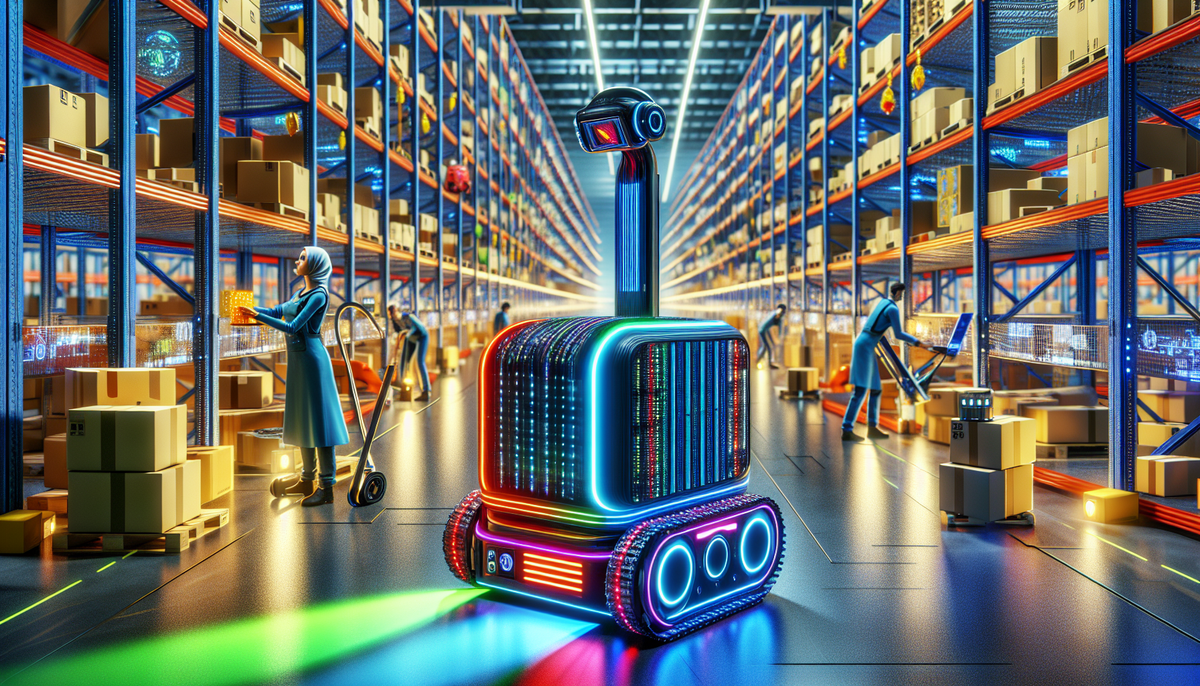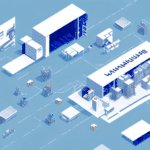Introduction to Autonomous Mobile Robots (AMRs) in Warehouse Automation
In the rapidly evolving world of warehouse automation, Autonomous Mobile Robots (AMRs) stand out as a transformative technology. AMRs enhance operational efficiency, reduce labor costs, and improve safety within warehouse environments. Leading the charge in this domain are industry frontrunners Fetch Robotics and Locus Robotics. This article provides an in-depth comparison of their AMR solutions to help you determine the best fit for your warehousing needs.
The Importance of AMRs in Modern Warehouse Operations
Warehousing operations are inherently complex, involving numerous manual tasks that can be time-consuming and prone to errors. Implementing AMRs addresses these challenges by automating processes such as:
- Goods Transportation: Moving products from one location to another efficiently.
- Picking and Packing: Streamlining order fulfillment to reduce processing time.
- Inventory Management: Providing real-time data on stock levels to enhance decision-making.
According to a McKinsey report, warehouses integrating AMRs can boost productivity by up to 25% while reducing operational costs by 20%.
Fetch Robotics vs Locus Robotics: Company Overviews
Fetch Robotics
Fetch Robotics offers a versatile range of AMRs designed to operate seamlessly within large and dynamic warehouse environments. Their fleet-based approach allows multiple robots to work collaboratively, optimizing task allocation and movement patterns for maximum efficiency.
Locus Robotics
Locus Robotics specializes in collaborative AMRs that work alongside human workers, enhancing productivity and flexibility. Their robots are designed for ease of integration and customization, making them suitable for warehouses with specific operational needs.
Key Features and Benefits of Fetch Robotics AMRs
- Scalability: Fetch Robotics' AMRs can easily scale to meet the demands of growing warehouse operations.
- Advanced Navigation: Utilizing SLAM (Simultaneous Localization and Mapping) technology for precise navigation and obstacle avoidance.
- Versatile Payloads: Models like the Freight series can carry up to 1,500 lbs, accommodating a wide range of goods.
- Integration Capabilities: Compatible with various Warehouse Management Systems (WMS) for seamless data exchange and operational coherence.
Fetch Robotics' solutions not only enhance efficiency but also contribute to sustainability by reducing energy consumption and minimizing carbon footprints.
Key Features and Benefits of Locus Robotics AMRs
- Collaborative Design: LocusBots work in tandem with human workers, promoting a flexible and adaptable workflow.
- Ease of Deployment: Quick setup with minimal disruption to existing warehouse operations.
- Customizable Operations: Ability to tailor functionalities to specific warehouse requirements.
- Real-Time Analytics: Provides actionable insights through comprehensive data tracking and reporting.
Locus Robotics enhances worker satisfaction by automating repetitive tasks, allowing employees to focus on more complex and value-added activities.
Comparative Analysis: Fetch Robotics vs Locus Robotics
Navigation and Mapping Technologies
Both Fetch Robotics and Locus Robotics employ advanced navigation systems to maneuver within warehouse settings:
- Fetch Robotics: Uses SLAM technology combined with 3D cameras for detailed environmental mapping, enabling precise navigation even in dynamic layouts.
- Locus Robotics: Utilizes LiDAR (Light Detection and Ranging) alongside barcode scanning for effective navigation, optimal for warehouses with static layouts.
Payload Capacity
There is a significant difference in payload capacities between the two:
- Fetch Robotics: Offers AMRs like the Freight series with payloads up to 1,500 lbs, suitable for heavy-duty tasks.
- Locus Robotics: Focuses on smaller payloads, with LocusBots carrying up to 50 lbs, ideal for light to medium-sized items.
Efficiency and Productivity
Efficiency gains are pivotal in selecting the right AMR:
- Fetch Robotics: Fleet-based coordination minimizes bottlenecks and optimizes task distribution across large operations.
- Locus Robotics: Enhances flexibility by allowing robots to adapt to fluctuating workloads and collaborate closely with human workers.
Cost Considerations
The investment in AMRs varies based on capabilities:
- Fetch Robotics: Higher initial costs due to advanced features and greater payload capacities but offers extensive scalability.
- Locus Robotics: More cost-effective for scenarios requiring smaller payloads and lighter automation needs.
Maintenance and Upkeep of AMRs
Regular maintenance is essential for optimal performance of AMRs:
- Fetch Robotics: Provides comprehensive maintenance packages, including on-site support and regular software updates.
- Locus Robotics: Offers similar maintenance services, ensuring minimal downtime and sustained efficiency.
Both companies prioritize reliability, offering dedicated support teams to address any operational issues promptly.
User Experience and Integration
The ease of integration and user experience significantly impacts the adoption of AMRs:
- Fetch Robotics: Requires detailed initial planning but offers robust fleet management tools for enhanced operational control.
- Locus Robotics: Emphasizes quick deployment and seamless collaboration with existing workflows, making it user-friendly for various operational environments.
Conclusion: Choosing the Right AMR for Your Warehouse
Deciding between Fetch Robotics and Locus Robotics depends on your warehouse's specific needs:
- Choose Fetch Robotics if: You require high payload capacities, scalable fleet management, and advanced navigation for large and dynamic warehouse environments.
- Choose Locus Robotics if: You seek collaborative robots that enhance flexibility, are easy to deploy, and integrate seamlessly with human workers in environments with lighter automation demands.
Both Fetch Robotics and Locus Robotics offer robust solutions that can significantly improve efficiency and productivity in warehouse operations. Assess your operational requirements, budget constraints, and long-term automation goals to make an informed decision.




















